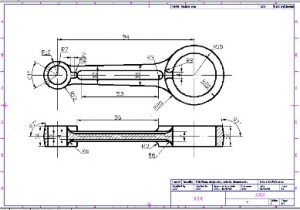
Learning a new language is as easy as G-D-T

Have you ever tried to assemble IKEA furniture and found yourself giving up halfway through the instructions?
It’s a good thing those that build our airplanes, cars, printers, implants, and every other device in between don’t. This probably has something to do with the standardization of engineering tolerances in drawings.
Since we live in the real world, no part can ever be made perfectly! This means that we allow some manufacturing error into each part that comes out of the production line.
But how do we demonstrate how much error is allowed? In order to make parts correctly that spin at 10,000 RPM or can fit inside of your hip, a set of rules needed to be established so that there is no ambiguity in stating where each hole should be located from a particular datum or how round a bore should be.
Geometric Dimensioning and Tolerancing is the system that defines and communicates engineering tolerances. It tells the manufacturing staff what degree of accuracy and precision is needed on each controlled feature of a part. It doesn’t just help define how much variation a specific feature on a part may have, but also the variation between features as well.
There are multiple standards available worldwide that describe the symbols and define the
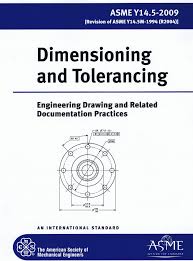
rules used in GD&T. One such standard is American Society of Mechanical Engineers Y14.5 whose latest and active standard is the one from 2009.
By comparison, another widely used standard which is growing in popularity are those used by the International Organization for Standardization (ISO). Although ASME provides all of their information in one document, this means that it is not updated as often (the last standard was in 1994).
This is different from ISO who typically addresses one topic at a time (i.e. ISO 10360 – CMM accuracy testing and performance verification) but receives revisions more frequently. Even though ISO is understandably more prevalent throughout the world, ASME is more dominant in the United States.
It is important to remember that the standards serve as a complete method to deliver design intent of parts through symbolic language between designers, manufacturers, and quality control. This means that communication and collaboration between all departments is vital for the production process not only due to reduction in cost, time, and energy but most important of all, for the customer.
This is because GD&T can help you solve one of the most important problems in manufacturing: to make tolerances as wide as possible. A tighter tolerance does not equal a better part; it equals a more expensive part!
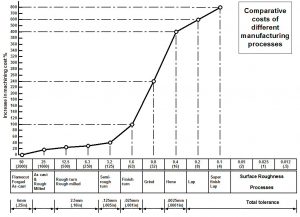
It is the same issue when two people speak a different language. An interpreter is needed which slows everything down and increases costs. If a problem arises with the manufacturing of a part, any two employees should be able to agree unequivocally on the information at hand with no ambiguity so as to not risk delays, confusion, and frustration. Many a time have I seen prints where True Position has been incorrectly applied or other controls have been applied just because they can be.
In the example below, note how the original callout is illegal since it is ambiguous as to how the total width tolerance zone should be applied. Two solutions are offered but note how the 0.3×0.3 mm square tolerance zone that is made with the second solution is larger than the 0.3 mm diameter cylindrical tolerance zone made by the first solution.
Typically, however, it is more functional to use the cylindrical tolerance zone so an understanding of the function of the part or assembly is necessary. A little knowledge can go a long way.
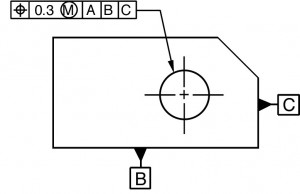
Original -Illegal
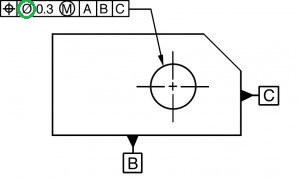
Legal
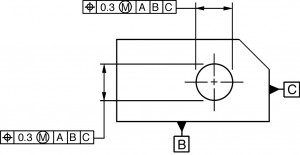
Legal
If you already use GD&T daily in your workplace and you’d really like to demonstrate your technical know-how with this language, you are able to get certified by ASME to a standard. ASME established the Geometric Dimensioning and Tolerancing Professional (GDTP) Certification Program which provides the means to recognize proficiency in the understanding and application of the geometric dimensioning and tolerancing principles described in the Y14.5 standard.
Those who would benefit best from this certification would be production/manufacturing engineers, design/process/quality engineers; tool or gage engineers, managers, programmers, and anyone who might work or develop CAD, CAM, or CAE software. Even then, this is still a limited list.
There are two levels of examination available. The Technologist level examination is a maximum of four hours in duration consisting of 100 to 150 questions. It tests the ability of an individual to understand technical drawings and definitions. The Senior level examination is a maximum of six hours and contains questions that are slightly higher level than the Technologist level exam testing the ability to select and apply geometric controls to drawings. The examination is structured as a closed book, multiple choice, computer-assisted examination and ASME membership is not a requirement.
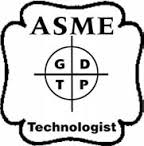
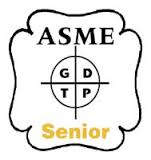
At the time of this writing, the exam for the 1994 standard is available although the exam for the 2009 standard is just around the corner. Certification for both levels (to the same edition of Y14.5) may be renewed without retaking the exam upon verification by ASME of involvement with GD&T for at least 24 of the previous 36 months.
At Wenzel America, we pride ourselves in finding the best metrology solutions for you by following the most up-to-date standards in the field which means that we provide the best value since nothing gets lost in translation! If you’d like more information, check out ASME’s website here or go directly to their GDTP applicant information here.
I’m proud to say that I am an ASME Technologist GDTP certificate holder to the 1994 standard. Throughout my preparation for the exam, I can recommend this guide by Robert H. Nickolaisen for great practice problems. If you would like additional practice problems that I’ve found, or have any GD&T related questions, please don’t hesitate to contact us here and speak some GD&T-ese with us!
Mariano Marks
Sources:
https://www.asme.org/shop/certification-accreditation/personnel-certification/gdtp-y14-5-geometric-dimensioning-and-tolerancing
https://www.asme.org/getmedia/37b301bf-a52c-42fe-83b7-deae7be20e12/ASME-Geometric-Dimensioning-and-Tolerancing-Professional-Certification.aspx
http://mca.valuedrivendesign.co.uk/help/Finish.aspx
